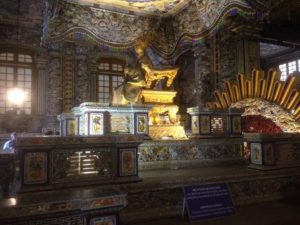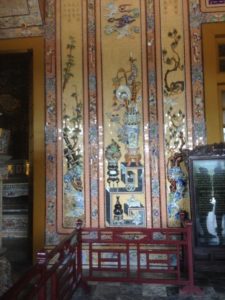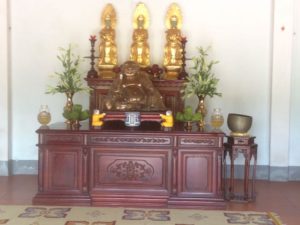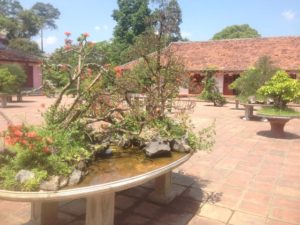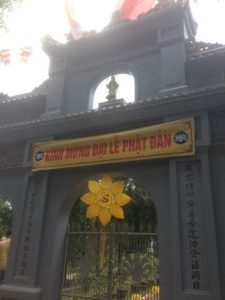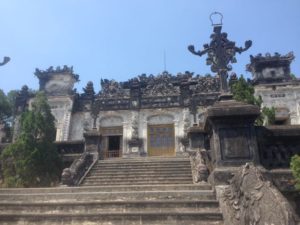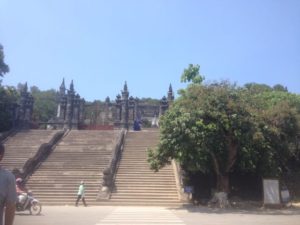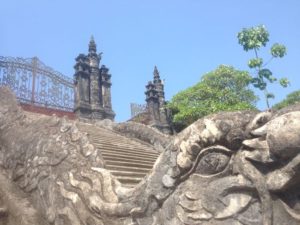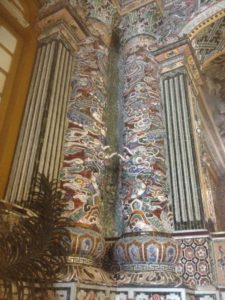We chose to do a boat tour up the Perfume River on a dragon boat.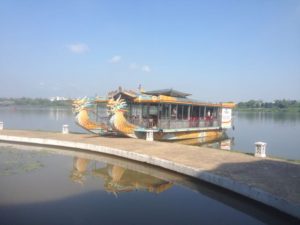 The lotus flowers that decorate the river and town are lovely.
The lotus flowers that decorate the river and town are lovely.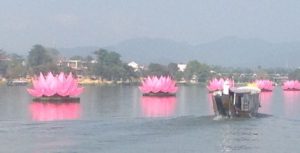
Along the way we passed the Imperial Citadel (with flag in background) with a replica of the imperial barge on the river.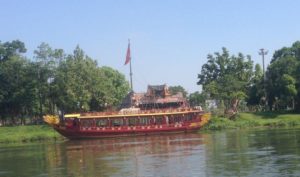
On the opposite side of the river is the screen that is supposed to keep evil spirits from crossing the river.
Our first stop was the Thien Mu (Heavenly Lady) Pagoda, built in 1601 on the spot villagers saw a lady in red descending fro the heaven. It is built in seven tiers. The brass bell cast in 1701 is supposed to have the purest sound of any bell. 
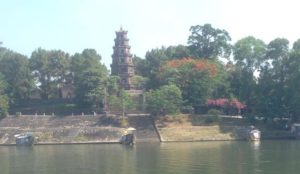
The abbot of this pagoda, Thai Quang Doc, drove 1000 miles to Saigon and immolated himself in 1963 to protest the Vietnamese government’s discrimination against Buddhists. Many other monks did the same in the following years. 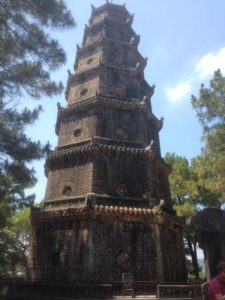
Several guardian figures protect the entrance. Behind a pavilion with a happy Buddha are the monks’ quarters and a peaceful garden.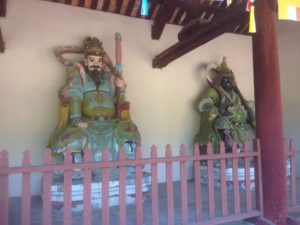
A smaller stupa sits at the end of the garden.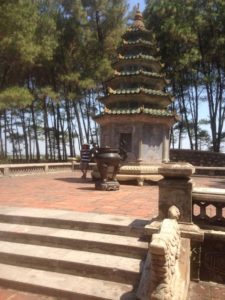
I learned that Thick Nhat Hanh was born in Hue.
We stopped in a village that makes incense and saw how it was made.
We also saw rice being dried on the street and the rice chaff being dried as well.
Then we drove to the Tomb of the Emperor Tu Duc, built from 1864-1867. He was a scholar and poet, leaving over 700 poems, but he was not a strong emperor, surrendering to the French without a fight. The grounds are surrounded by a moat and water features. 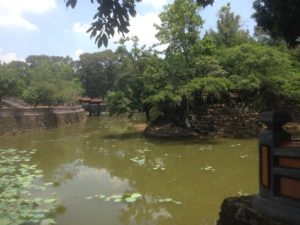
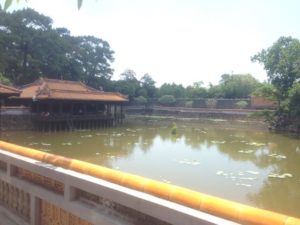
He used the grounds as a second palace and is not buried here. He was buried in a secret tomb and his body has never been discovered.
The tiles symbolize yin yang (some turned up and some down). The Chinese inscription on the end mean longevity. He lived a (comparatively) simple life. Many relics such as glass paintings are on display.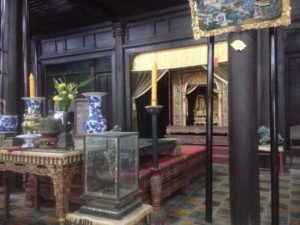
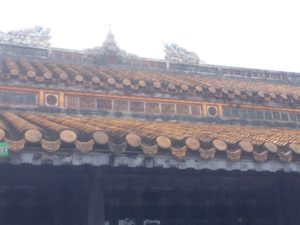
He had 103 wives and 300 concubines but never had a child. He had to adopt his nephew in order to have a successor. Unfortunately, the nephew who succeeded him was poisoned by powerful mandarins within three days, the next emperor was poisoned in 3 months, and the next within 8 months.
Behind his living quarters is a theater where the emperor watched performances.
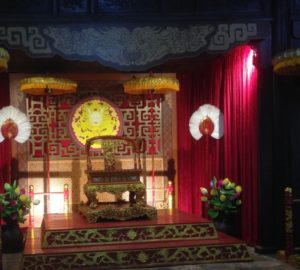
The entrance to tomb of his first wife is also guarded by a screen to keep out evil.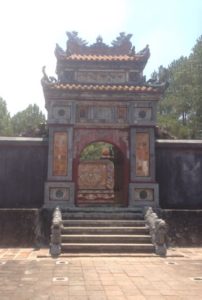
The grounds are shaded and very pretty.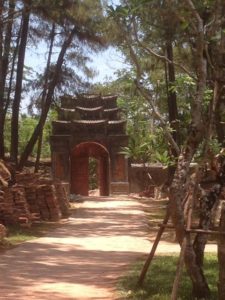
Many Buddhist have an altar to worship Buddha and their ancestors inside the house, but they also have spirit houses for lost spirits and or special relatives outside the house.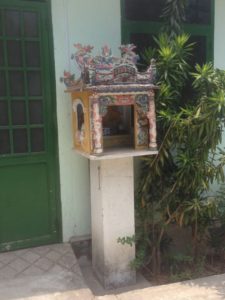
Next, we visited the Dong Thien Pagoda where we were served a vegetarian lunch by the Buddhist nuns. The gardens were lovely.
 After lunch one nun explained their routine. They wake at 3:30, and work, meditate, or study until they go to bed at 10pm. They visit their families once a year, usually at the Tet New Year.
After lunch one nun explained their routine. They wake at 3:30, and work, meditate, or study until they go to bed at 10pm. They visit their families once a year, usually at the Tet New Year.
After lunch we drove to the tomb of the 12th emperor, Khai Dinh. He became emperor at 31 and ruled for 9 years. His tomb is relatively small, only 2 acres, but it took 11 years to complete and he died before it was done. It is monumental on the outside and colorful on the inside.
Mandarins guard the courtyard.
Inside, the tomb is elaborately decorated with mosaics made from broken china and green and brown glass from beer bottles.
He is buried beneath the throne.